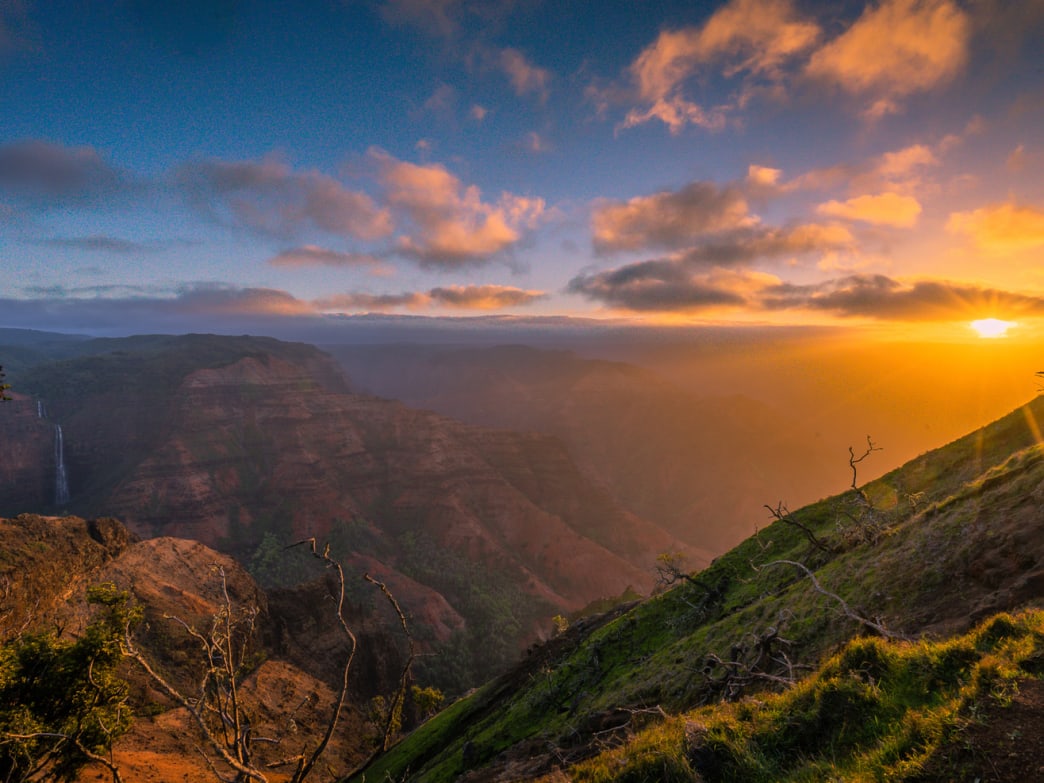
Alterations
Description
These would come in handy too...

The 2,140-acre Monte Sano State Park in Huntsville has long enchanted hikers, campers, and cyclists with its vibrant fall foliage, scenic trails, and resplendent views.
Yet a relaxing day at the park can quickly turn sour.
A 24-year-old hiker experienced this firsthand in February 2017, when she went missing after hitting the trails at Monte Sano for an afternoon trek. As the sun set and temperatures neared freezing and she still hadn’t returned, her worried boyfriend called the police.
Fortunately, local agencies found the missing hiker the following morning; she had a few scrapes and cuts but was otherwise unharmed, according to local media reports.
The frightening story had a happy ending, but it underscored how quickly things can go wrong, even in popular parks and on well-trafficked trails.
For that reason, it’s important that hikers carry what are known as the Ten Essentials whenever they head outdoors. The Ten Essentials are 10 items that every hiker should bring on every outing, in the event of emergency.
The Ten Essentials first appeared in the 1974 book Mountaineering: The Freedom of the Hills and were updated in 2003 to account for technological advances and specific needs. Here, an overview on what the Ten Essentials are all about—and why you need them for every hike.

As convenient and commonplace as smartphones are these days, it’s risky to count on your digital device as your only navigational tool for a number of reasons. GPS and other location services will drain your battery, rainy conditions may render items useless, and there’s no guarantee you’ll get service in the sticks.
Instead, go old-school when it comes to navigational aids, which can be a lifesaver when you take a wrong turn or walk off-trail, even after a few steps. At minimum, carry a compass, and stash a paper map in your pack (whether a guidebook, website printout, or fold-up map). Topographic maps, in particular, provide elevation gains and usually account for landmarks—both pieces of information that can prove vital in case of emergency.

There are few more painful feelings than hiking with a sunburned dome at the height of summer. Protect yourself from excessive sun exposure with a pair of sunglasses and a tube of sunscreen, both of which block the UV light that scorches your skin.
Check with your sunglasses manufacturer (or at the store) to learn more about the lenses’ UV-blocking capabilities. For sunscreen, aim for a sun protection factor (SPF) of 15 or 30, and keep in mind that you’ll need to reapply more often in hot temperatures (in other words, throughout an Alabama summer).
And don’t forget about sun protection when exploring on (or near) snow, ice, lakes, rivers, and other bodies of water. Even on cloudy days, these can reflect light and make life miserable if you aren’t equipped with proper protection.

Conditions in the outdoors can change in an instant, so it’s important to bring layers of clothes to account for unpredictable weather. While you’re at it, throw a pair of gloves and a hat into your pack—they take up so little room and can make a huge difference if the temperature drops unexpectedly.
Ideally, the first layer should be a moisture-wicking shirt that helps your body remain warm in cool conditions (or cool in warm conditions). Whenever possible, avoid cotton, as it absorbs sweat and moisture and can cause chafing.
The next layer should be for insulation, which traps air near your body and keeps you warm. This where your wool and down sweaters, shirts, and vests usually come in handy. Finally, come prepared with an outer "shell" layer to protect against wind, rain, snow, and other nasty conditions. Some (but not all) “shell” jackets are breathable and most (but not all) are waterproof like our cascade jacket; what you use should account for the climate you’ll be in.
Bring a headlamp, lantern, or flashlight for low-light conditions and for alerting responders to your location. Headlamps have the benefit of hands-free use and usually have a long battery life; most headlamps also include some kind of strobe setting that helps search-and-rescue units find you in foggy conditions and dense forests.
Lanterns and flashlights, meanwhile, benefit from powerful beams and lightweight portability. Whatever you choose, be sure to check the batteries before setting off, and don’t forget to pack spares.

Many outdoor and some department stores sell compact, portable first-aid kits with gauze, bandages, ointments, and other essentials for treating small cuts, scrapes, blisters, and bug bites. These are usually adequate for day trips and short outings, but for longer, overnight treks, your kit will need to be more robust.
That said, don’t be shy about stocking up if other needs persist. For example, mosquitoes can be especially annoying in Alabama, so it’s a good idea to toss a bottle of repellent into your pack before hitting the trail. Likewise, portable hand warmers will keep you warm in chilly conditions.

In addition to being a comforting presence at a campsite, a fire can literally save the day in a precarious situation. But you have to be able to create it, and with that, you’ll need a fire-starting essential, which can be matches, lighters, or an emergency fire-starting kit. Your choice may depend on the conditions in which you’ll be hiking.
Matches (either waterproof matches or conventional matches stored in a waterproof container) can start fires quickly and easily, and they make for ideal back-ups when conventional lighters run out of fuel. Pro tip: Consider packing along a little paper, dryer lint, wood chips, and petroleum jelly-covered cotton balls to help start a fire (and keeping it going).

Your repair kit and tools depend on your needs, climate, conditions, outdoor comfort level, survival skills, and gear. The longer you’re out, and the more gear you carry, the more you’ll want for repair and safety.
At the very least, consider a pocket knife or multi-tool; the latter is especially helpful for screwing glasses back together, repairing gear, preparing food, opening cans, cutting cloth, and more. Other optional accessories include patch kits for air mattresses, trowels for digging holes, extra screws for glasses, and duct tape—for repairing seemingly everything. There’s a reason many veteran adventurers always carry a roll of duct tape in their packs.
There’s very little downside to bringing extra food on a hike, even a short one. Be sure to pack a few snacks, as well as an extra meal’s worth of food (if not two). Aim for non-perishable items that won’t wither in extreme conditions, including jerky, gels, trail mix, granola or energy bars, dried fruit, chips, and crackers.

There’s no magic formula for figuring out how much water to carry. So keep your distance in mind when deciding: The longer you hike, and the more strenuous your trip, the more water you’ll need. Always bring at least one full bottle of water, as well as water purification tablets or a portable purifier for longer trips (if water sources are available).
Whatever you do, be sure to rehydrate before you feel parched, and remain mindful of how much water you have left. (Remember that scene from the book-turned-movie Wild, when hiker Cheryl Strayed was out of water on a particularly grueling stretch of her hike?)
If you become lost or otherwise stranded, shelter can play an important role in keeping warm and guarded against the elements.
If packing a tent seems excessive or unwieldy, consider a lightweight tarp, foil emergency hiking blanket (commonly called "space blankets" for their resemblance to something an astronaut might wear), sleeping pad, or even garbage bag—all of which can make an unexpected night in the outdoors a little more bearable.
Written by Matt Wastradowski for RootsRated in partnership with BCBS of AL and legally licensed through the Matcha publisher network. Please direct all licensing questions to legal@getmatcha.com.